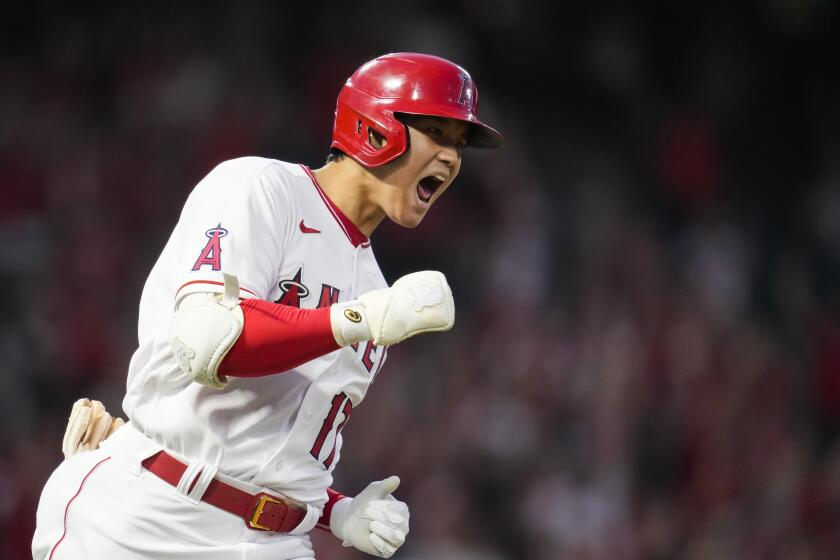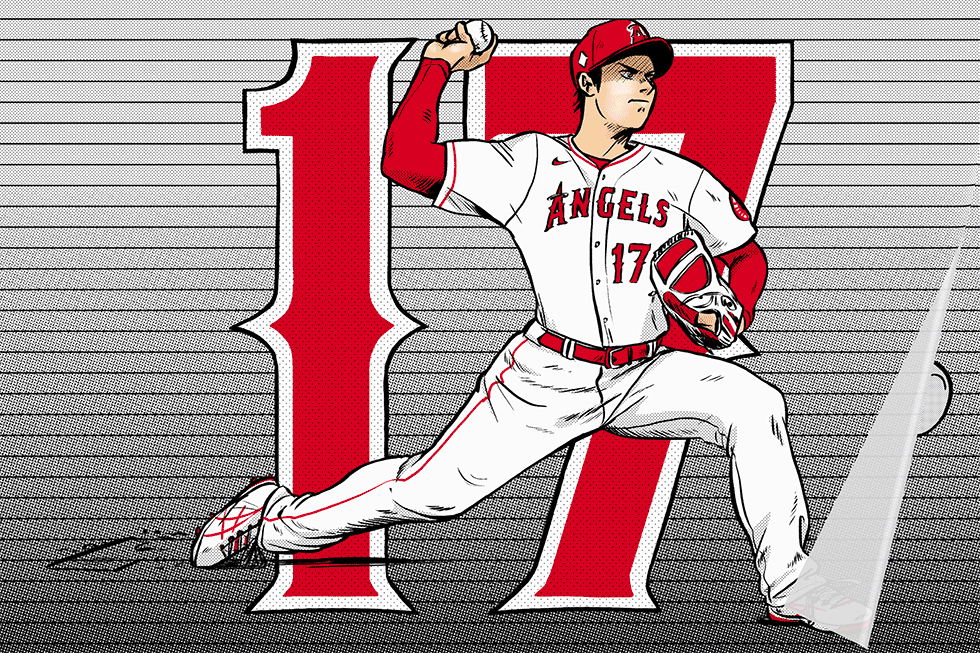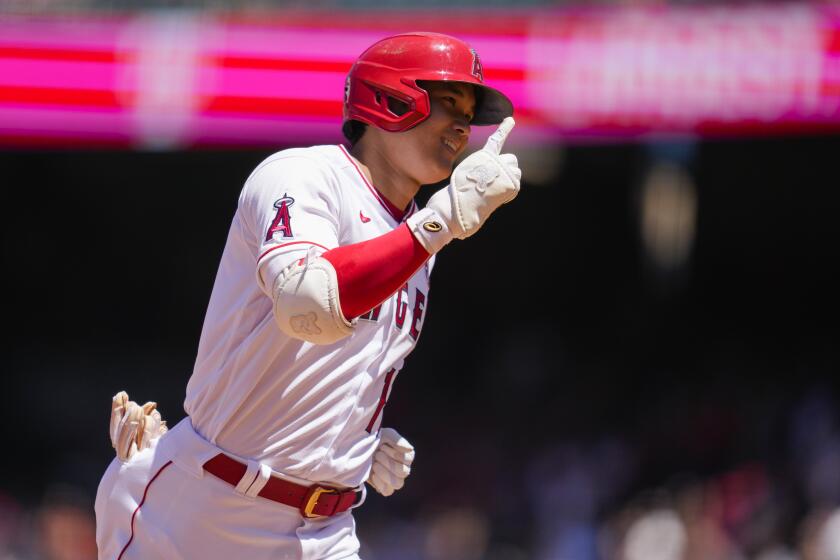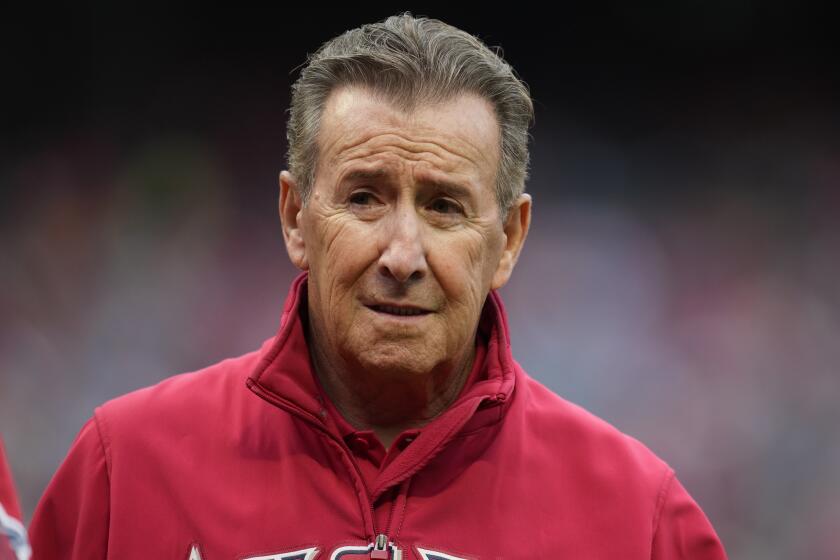Would Babe Ruth be a Shohei Ohtani fan? His great-grandson thinks so
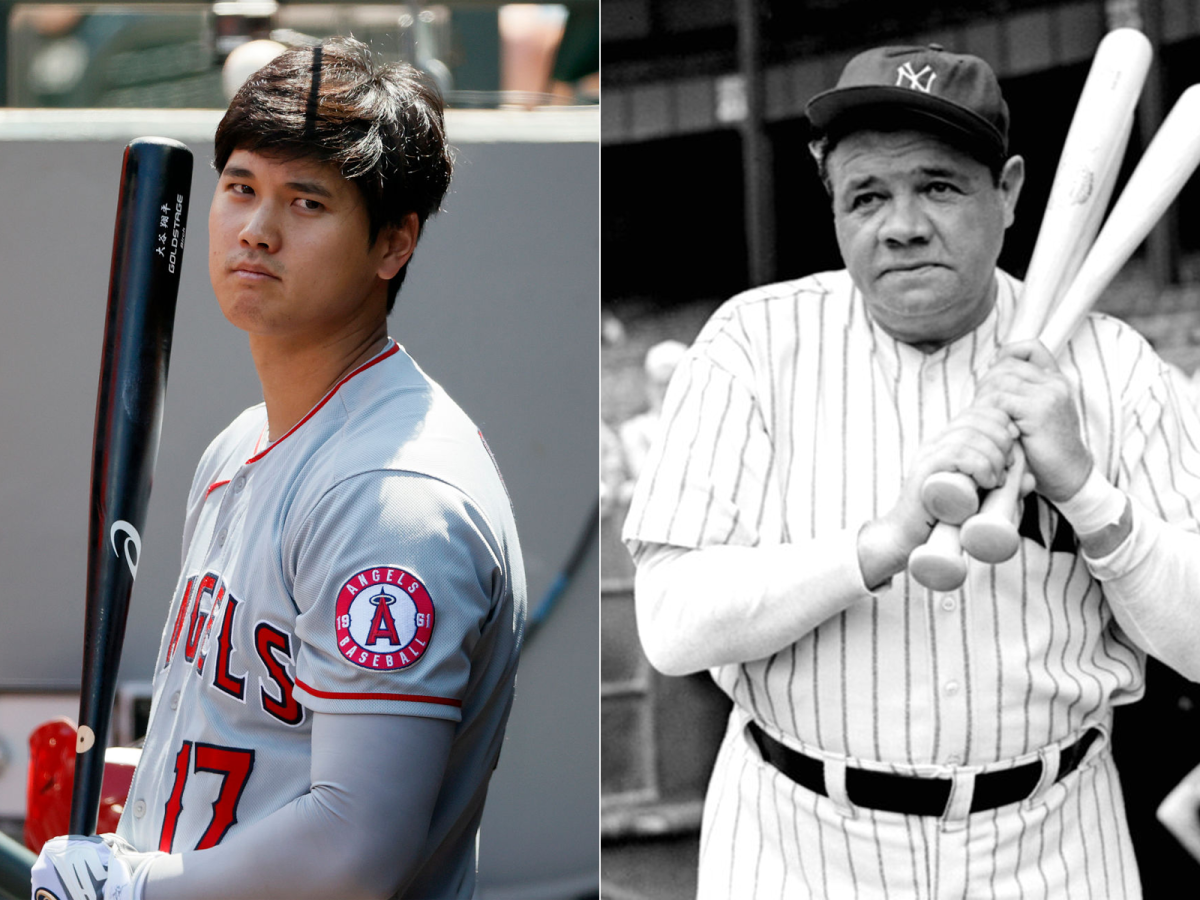
Most people don’t know much about their great-grandparents.
Then again, most people aren’t Babe Ruth’s great-grandson.
Brent Stevens never met Ruth, born years after his famous forebearer died. But, Stevens has heard enough family stories, talked to enough older relatives and learned enough of his personal history to have a good sense of what his great (bambino) grandpa was like.
And this year, it gives Stevens unique insight into one of baseball’s more compelling questions.
What would Ruth think of Shohei Ohtani’s historic two-way season this year?
Not since the legendary Babe Ruth has a player dominated on the mound and at the plate like the Angels’ Shohei Ohtani.
“I think he would be absolutely behind Ohtani,” Stevens said. “As am I.”
Like other fans of the sport, Stevens has watched Ohtani’s start to the campaign with the Angels in astonishment, equally impressed by the left-handed slugger’s prodigious power at the plate, where he leads the majors with 33 home runs, as with his production as a starting pitcher, where he has a 3.49 ERA and 87 strikeouts in 13 starts.
It’s the kind of thing that has rarely been attempted — let alone so dominantly mastered — since the early part of Ruth’s prime more than 100 years ago.
“I really hope as the season progresses,” Stevens said, “we look back on this season as something extremely impressive and incredibly rare that we should celebrate in the annals of baseball history.”
Stevens knows as well as anyone the way his great-grandpa’s accomplishments have been.
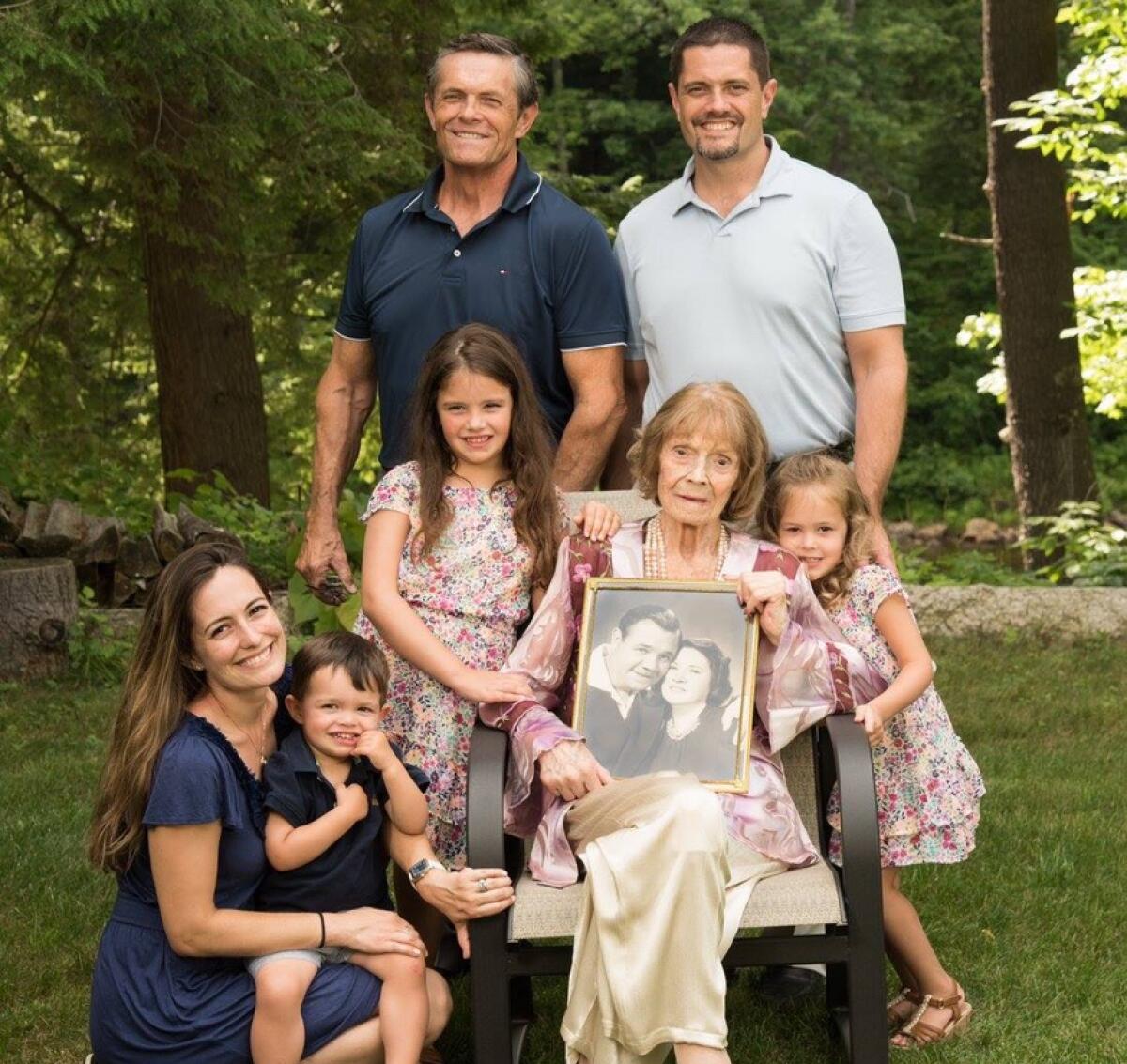
Not only is Stevens, 43, Ruth’s great-grandson (Stevens’ grandmother, Julia, was adopted by Ruth after he married her mother, Claire, in 1929), but since 2006 has also managed a website dedicated to Ruth’s legacy called BabeRuthCentral.com.
Stevens’ original goal in creating the site was to draw attention to some of the overlooked aspects of Ruth’s career.
And this season, Ohtani’s play has aided in the cause.
“I love it … to be able to compare it back and basically kind of re-educate, or educate people for the first time, of Babe Ruth,” Stevens said. “Because everyone knows what a great hitter he was. But a lot of people don’t know just how good he was as a pitcher.”
Indeed, before he became baseball’s first legendary slugger, the “Sultan of Swat” who ushered in a new age of power-hitting in the sport, Ruth was one of the league’s premier left-handed pitchers, quickly becoming a star on the mound after debuting with the Boston Red Sox in 1914.
During his first four seasons, he only batted on the days he pitched — the American League had not yet adopted the designated hitter — or when he was occasionally used as a pinch-hitter.
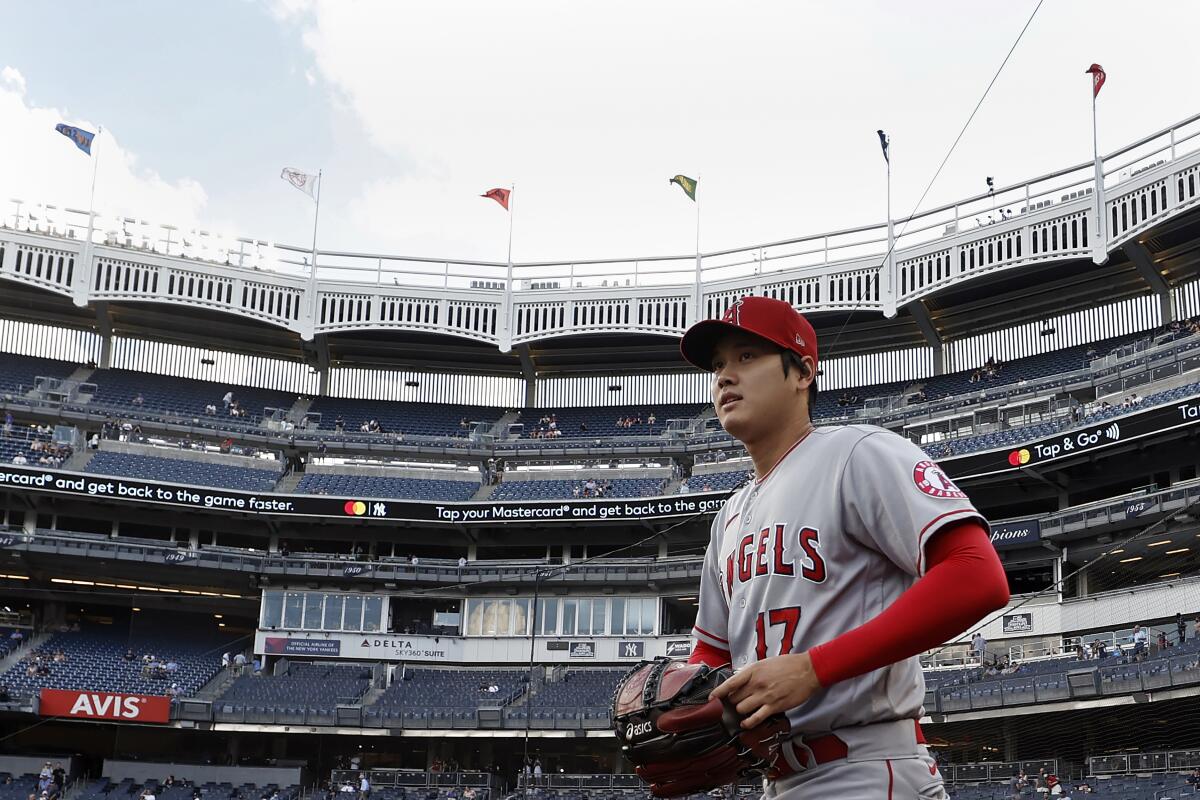
But that changed in 1918, when Ruth transitioned into a two-way player who made 20 appearances on the mound with a 2.22 ERA — plus two winning starts in the World Series — and started 70 other games at either first base or the outfield.
In 1919, Ruth spent the first half of the year playing both ways again before transitioning into more of a full-time position player, finishing the year with an MLB-best 29 home runs and 113 RBIs as well as a 2.97 ERA in 17 pitching appearances.
According to Stevens, Ruth’s motivation for switching roles was simple.
“He just wanted more time playing,” Stevens said. “That was what was most important to him. If that meant becoming a full-time hitter where he was in every game, versus every four to five games as a pitcher, he wanted to make the switch.”
And by 1920, when Ruth was infamously sold by the Red Sox to the Yankees, that transformation was complete and Ruth made only five more pitching appearances the rest of his career while becoming one of the most prolific sluggers in the history of the game.
“When he really started to become more and more of a hitter, everyone was so indexed on what a great hitter he was, these long balls that he was hitting,” Stevens said of Ruth, whose 714 career home runs ushered in a new era of power-hitting in the sport. “It was just so novel at the time. I don’t think people were necessarily quite as focused or impressed at the fact that he could do both so well.”
The fact no one else came close to having the kind of two-way success that Ruth did, Stevens believes, is what has made his dual dominance so remarkable. Outside of a few Negro League standouts from that same time period, such as “Bullet Joe” Rogan and Ted “Double Duty” Radcliffe, baseball didn’t see any true two-way stars emerge for the next century.
Not until Ohtani arrived from Japan in 2018.
After battling injuries and inconsistency with both his delivery and his swing in his first three MLB seasons, Ohtani has finally put all the pieces together this season, becoming the first player in MLB history to earn an All-Star selection as both a hitter and pitcher (the game wasn’t founded until the tail end of Ruth’s career in 1933, though he still hit the first home run in the history of the event).
“What Ohtani is doing is extremely rare,” Stevens said. “I think it’s an awesome thing for baseball.”
Shohei Ohtani’s two-way exploits will be among the highlights during the All-Star game and home run derby. Check out The Times’ complete coverage.
The longer Ohtani keeps it up, the more Ruth’s name and legacy will be invoked — and that, Stevens thinks, would have made his great-grandpa smile.
“There’s talk if Ohtani could ultimately be considered from a dual perspective better than Babe? I think that still remains to be seen,” Stevens said. “But from talking to my grandmother, Babe was always one that would have encouraged the breaking of records, because it was the right thing for baseball. At the end of the day, Babe was so passionate about the game and what was right for the game, he would have celebrated that.”
More to Read
Go beyond the scoreboard
Get the latest on L.A.'s teams in the daily Sports Report newsletter.
You may occasionally receive promotional content from the Los Angeles Times.

